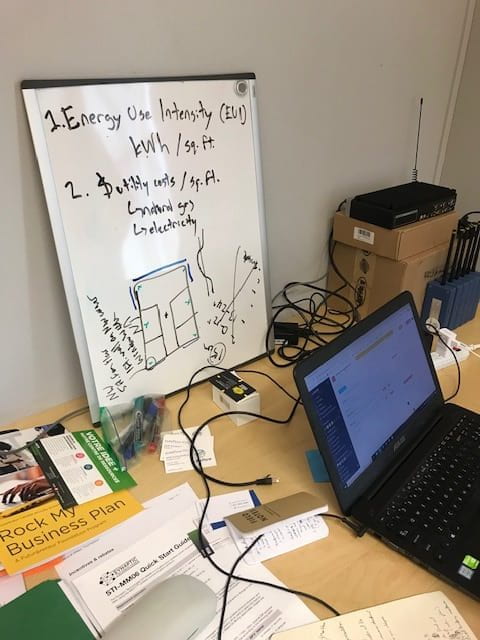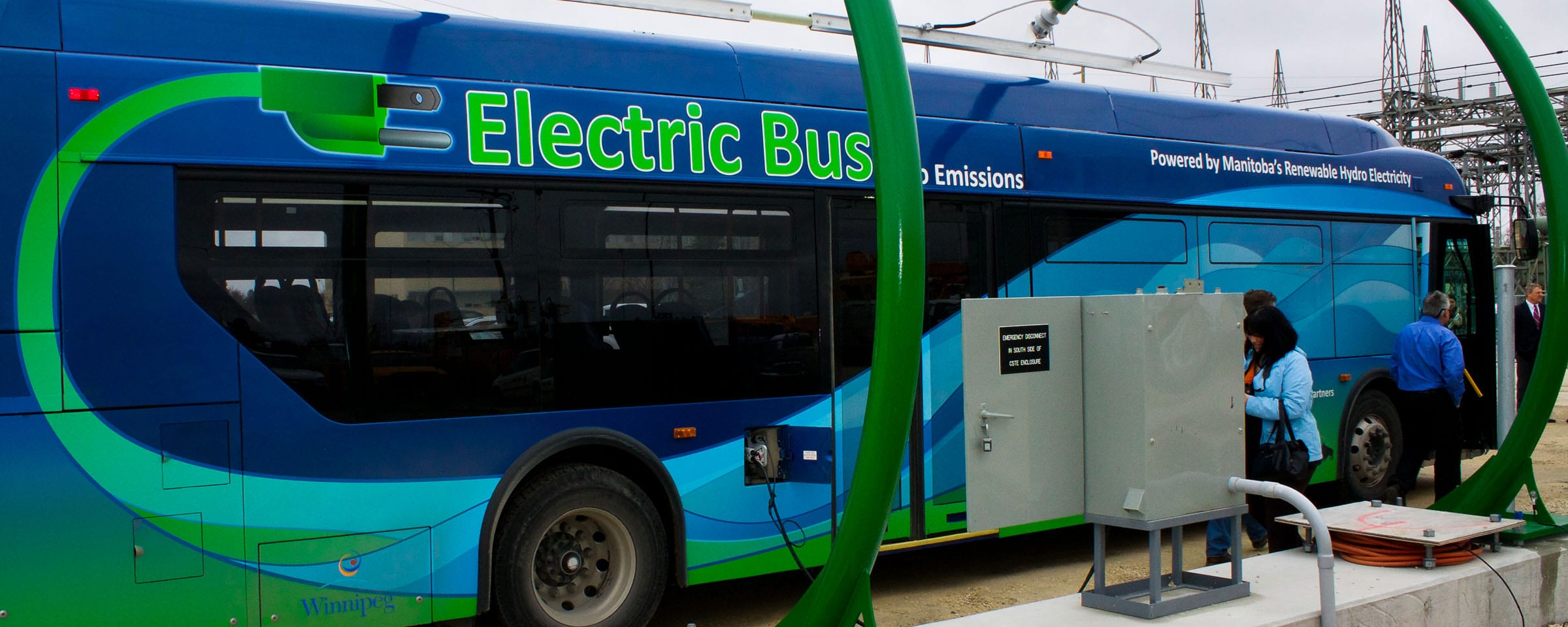Saving money, saving the planet: RRC’s first Mitacs-funded project takes off at ACE Project Space
Matt Schaubroeck is in the business of making buildings smarter. The entrepreneur has teamed up with Red River College (RRC) to develop the software behind ioAirFlow, a product that’s been percolating for the past two years and is now being put into fruition at RRC’s ACE Project Space.
“Essentially, ioAirFlow is a data analysis tool,” says Schaubroeck. “We use big data to determine energy efficiency in commercial buildings.”
ioAirFlow takes the concept of residential smart thermostats and applies it to commercial-industrial buildings. The goal is to make big buildings smarter and greener, with a technology that’s as accessible as possible.
The idea occurred to Schaubroeck when he was working on his MBA in a tech commercialization program. After meeting industry leaders and talking about his idea of a smart thermostat for commercial buildings, Schaubroeck realized there was a real need for the product.
“Everyone wants to save money on energy bills,” he says. “We want to save the planet at the same time.”
The big idea was there. Two years of research and development were in the books – including working with RRC’s Building Envelope Technology Access Centre (BETAC) last year, heating up a trailer behind the Notre Dame Campus in order to track temperature and humidity.
Schaubroeck worked alongside Steve Lawrence, Coordinator of the ACE Project Space, on the research proposal . Lawrence is also working as the academic supervisor/advisor for the project.
. Lawrence is also working as the academic supervisor/advisor for the project.
Earlier this month, the time finally came to put the idea into action. That’s where the ACE Project Space and funding from Mitacs came in, making this the first Mitacs-funded project at RRC.
“We’re thrilled to be the first Mitacs-funded project at ACE Project Space. Mitacs presented themselves as a great option to allow us to get into a space like this,” says Schaubroeck. “It’s such a great opportunity. We wouldn’t be here without their help.”
Mitacs is a national not-for-profit research network that has traditionally funded applied research collaborations at Canadian universities. Last year they began funding colleges, and with former RRC research manager Brent Wennekes taking the lead for Mitacs in Manitoba, RRC was one of the first colleges to sign on as a Mitacs partner institution.
“Mitacs is very pleased to be able to support this partnership with ioAirFlow with funding for their talented research intern,” says Wennekes. “RRC has been a national college leader in applied research for many years, and ACE Project Space has established itself as a key player in Winnipeg’s start-up community. Our program is perfect for start-up companies and with ACE, you get not only talent, but office space as well!”
 Along with Xinxin Wei, a Business Information Technology (BIT) student from RRC, and the third member of their team, Amanda San Filippo, Schaubroeck is now working on the software, crunching the numbers on the program’s back-end.
Along with Xinxin Wei, a Business Information Technology (BIT) student from RRC, and the third member of their team, Amanda San Filippo, Schaubroeck is now working on the software, crunching the numbers on the program’s back-end.
“The big problem with energy efficiency is you have to be an expert to use it. The front end of this system is going to make it as easy to understand as possible,” he says. “We’re working with building owners to understand what they care about and how it’s going to make a difference.”
While the whole team had to face the challenge of learning the complicated technical language of the software programming, Xinxin Wei had to face the additional challenges of honing his English language skills and navigating a new country. The international student has just finished his first year of the BIT program and is thrilled to be working on ioAirFlow.
“I don’t have any experience in Canada,” says Wei. “The most important part for me is working with a real Canadian employer. I’ve been learning how to work with others, and the whole experience is very great.”
The team hopes to have the program off the ground by this fall. For more information on ioAirFlow, please visit their website.



 One of the
One of the  A report compiled by a joint-task force was recently released detailing the electrification of transit and the potential to implement electric transit buses in the City of Winnipeg.
A report compiled by a joint-task force was recently released detailing the electrification of transit and the potential to implement electric transit buses in the City of Winnipeg.  Would a text message from a local coffee shop you visited offering a free coffee get you back in the door? With some help from RRC students from the College’s ACE Project Space in Winnipeg’s Exchange District, a new Winnipeg-based service believes the answer is yes.
Would a text message from a local coffee shop you visited offering a free coffee get you back in the door? With some help from RRC students from the College’s ACE Project Space in Winnipeg’s Exchange District, a new Winnipeg-based service believes the answer is yes. Red River College was cited as an example of how colleges can accelerate innovation in Canada during a Globe & Mail
Red River College was cited as an example of how colleges can accelerate innovation in Canada during a Globe & Mail